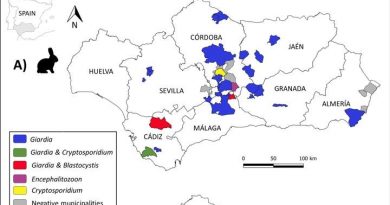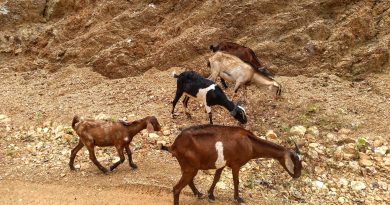Mycobacterium tuberculosis complex in domestic goats in Southern Spain
Preventive Veterinary Medicine
Abstract
Tuberculosis (TB) is a zoonotic infectious disease caused by bacteria belonging to the Mycobacterium tuberculosis complex (MTC), which can affect a wide variety of domestic and wild animal species. Although the role of goats as a reservoir of MTC bacteria has been evidenced, information about the circulation of MTC strains in this species is still very scarce. The aim of the present study was to determine the seroprevalence, spatial distribution, risk factors and MTC spoligotypes circulating in goats from Andalusia (Southern Spain), the Spanish region with the largest goat census and a hotspot area of TB in both cattle and wild ungulates. A total of 2155 serum samples from 80 goat flocks were analyzed by an in-house ELISA using the P22 protein complex as a coating antigen. Antibodies against MTC were detected in 473 goats (21.9%, 95% CI: 20.2–23.7) and the true seroprevalence was 22.3% (95% CI: 20.6–24.1). Seropositivity was found in 72 (90.0%) of the 80 flocks analyzed. The generalized estimating equation model showed that the management system (higher seroprevalence on intensive and semi-intensive farms), and the presence of hospital pens inside the regular stables, were risk factors potentially associated with MTC exposure in goats in Southern Spain. The spatial analysis identified a significant spatial cluster (p < 0.001) in Eastern Andalusia. A total of 16 different MTC spoligotypes, including five of M. caprae and eleven of M. bovis, were identified in goats between 2015 and 2022 in the study area, with SB0157 as the most frequently isolated. The results obtained indicate widespread and non-homogeneous spatial distribution of MTC in goat herds from Southern Spain. The high individual and herd-level seroprevalence values found suggest that goats could play a significant role in the maintenance and transmission of MTC in the study area. Our results highlight the importance of implementing control measures in this species.




